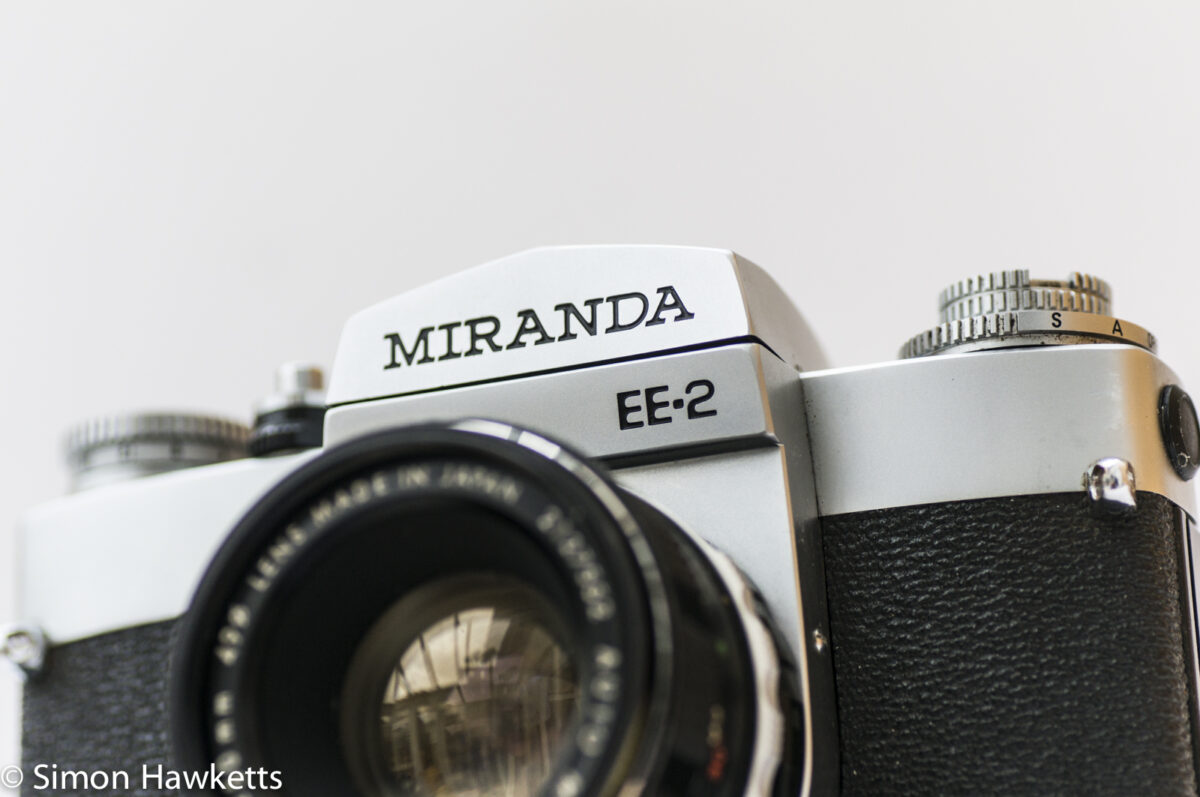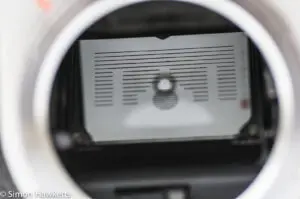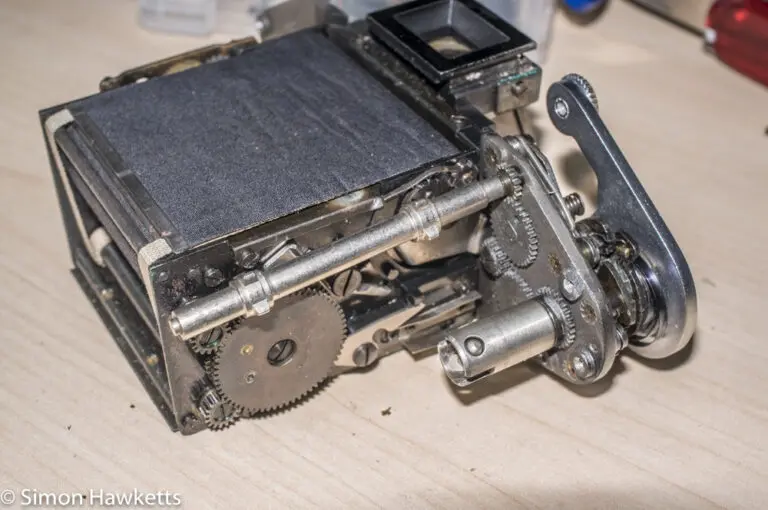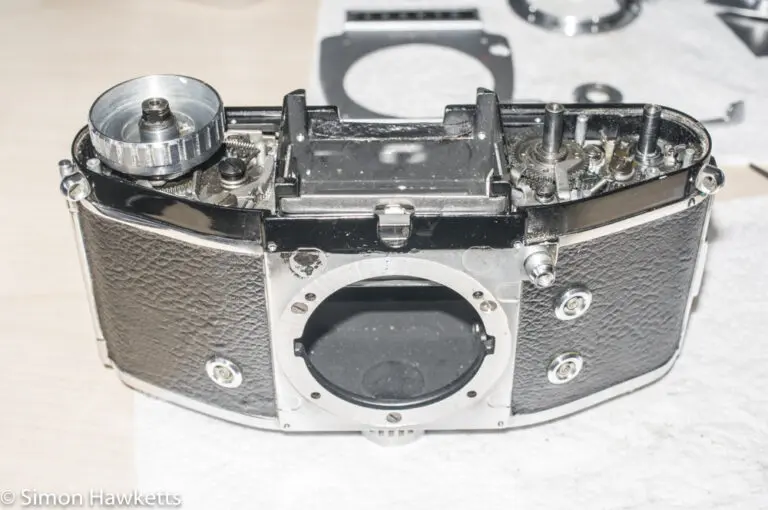Miranda Sensorex EE2 35 mm camera
This Miranda Sensorex EE2 is the third Miranda camera I’ve bought since I discovered that Miranda were not just a bargain-basement cheap camera made for the Dixon’s high street chain store, but were in fact a solidly engineered, precision 35 mm film camera.
In addition to this latest arrival, I also have a Sensorex and a model F winging their way towards me courtesy of eBay UK.
Miranda Sensorex EE2 Images
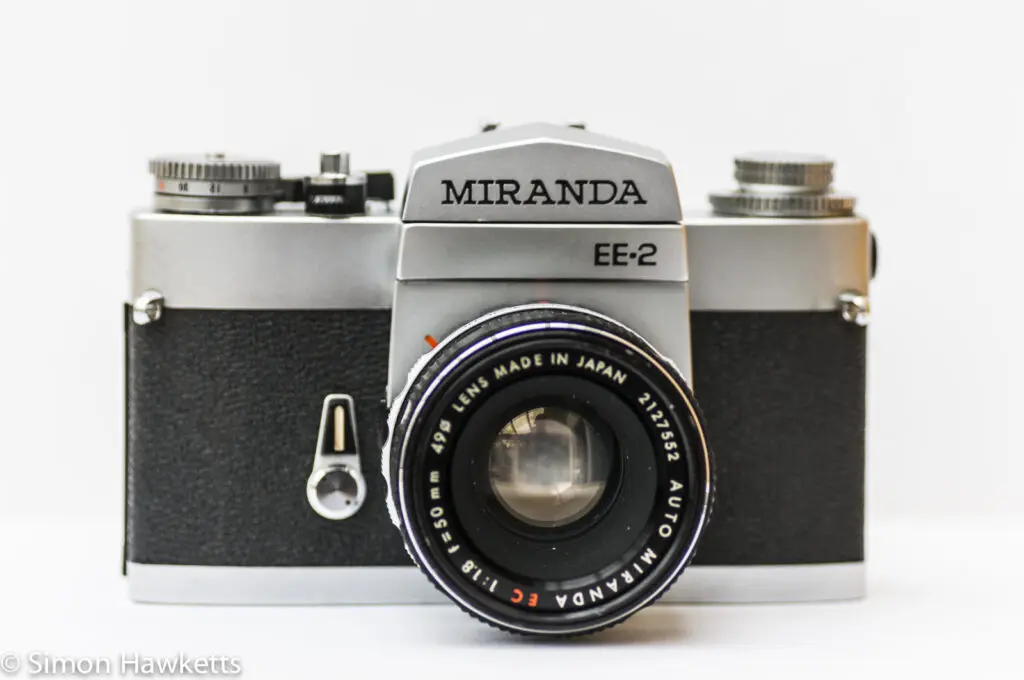
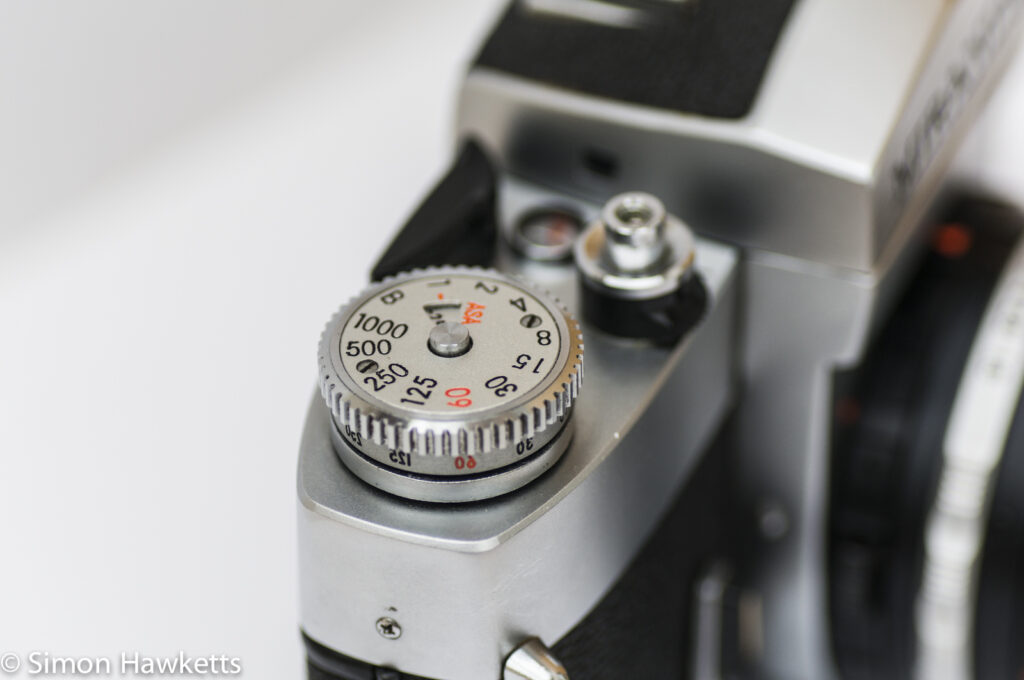
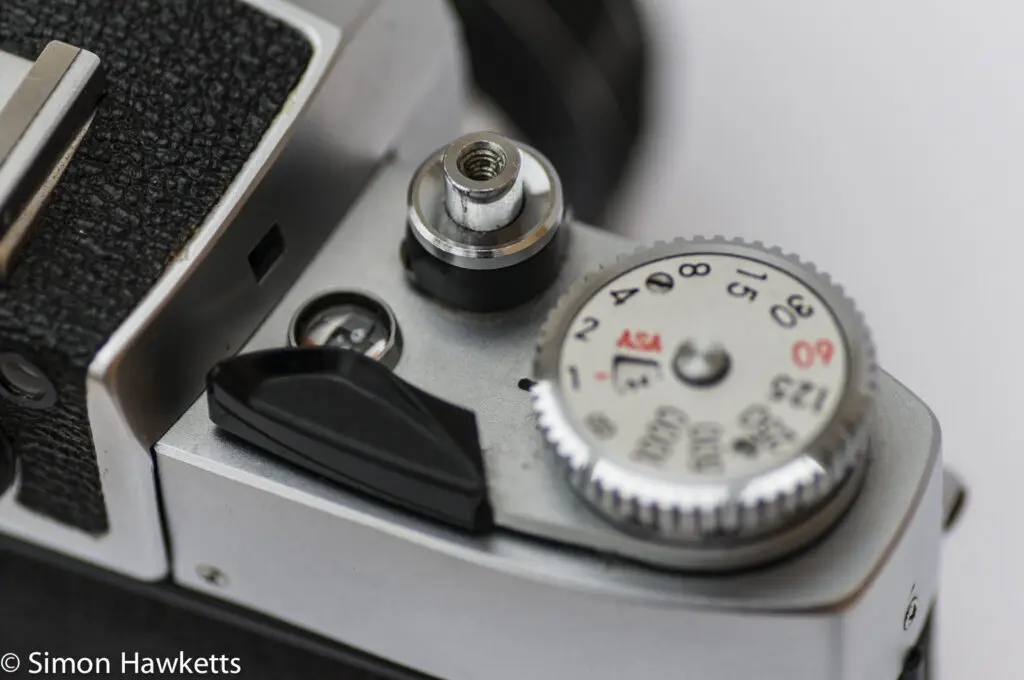
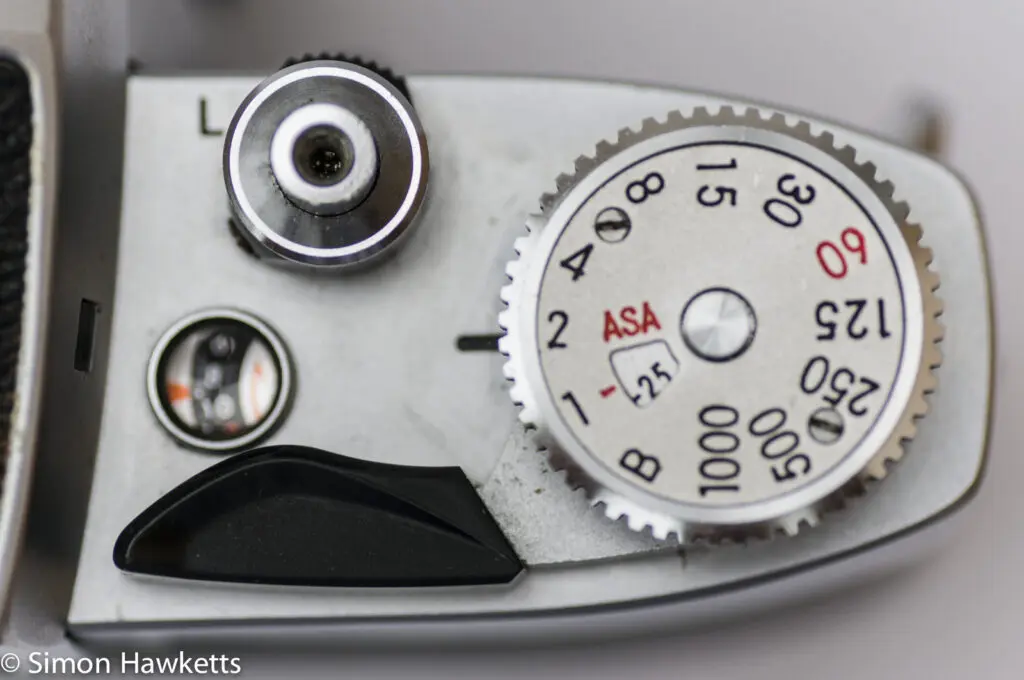

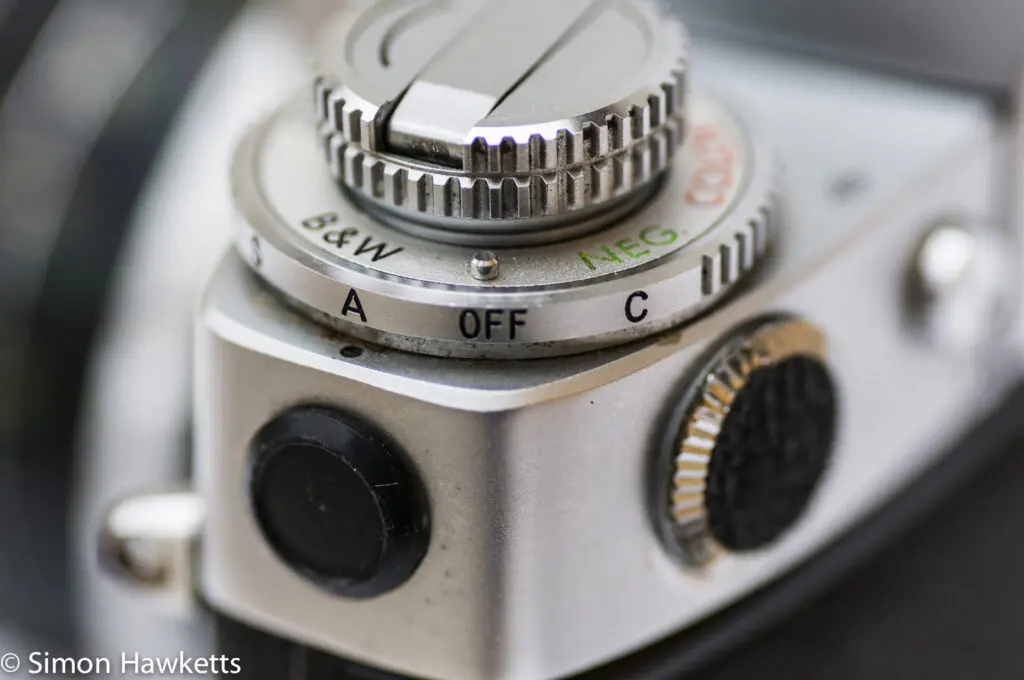
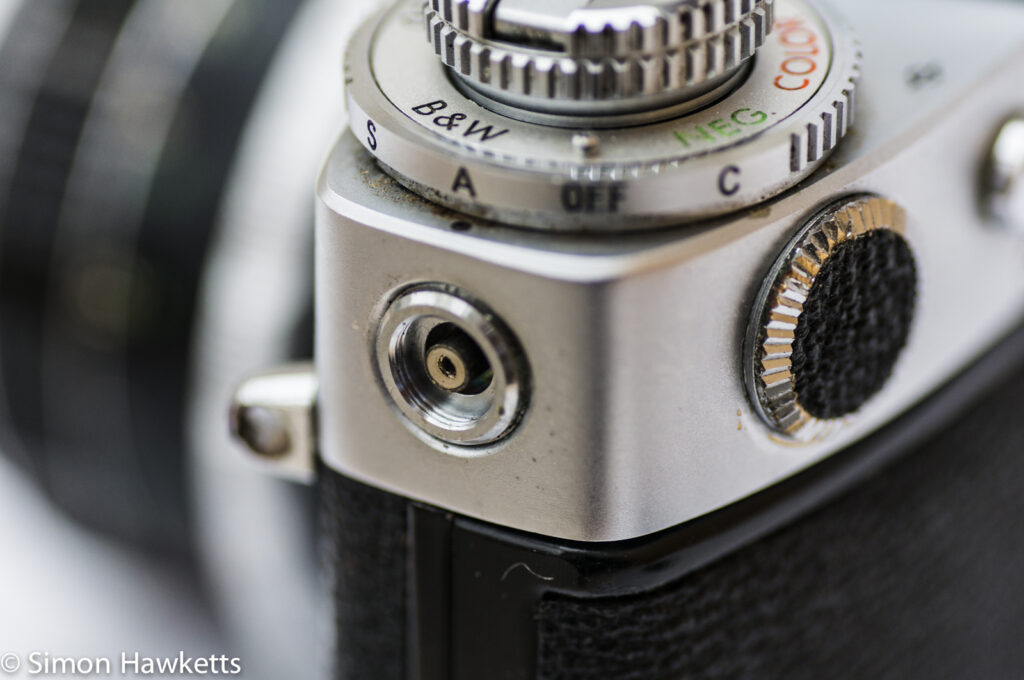
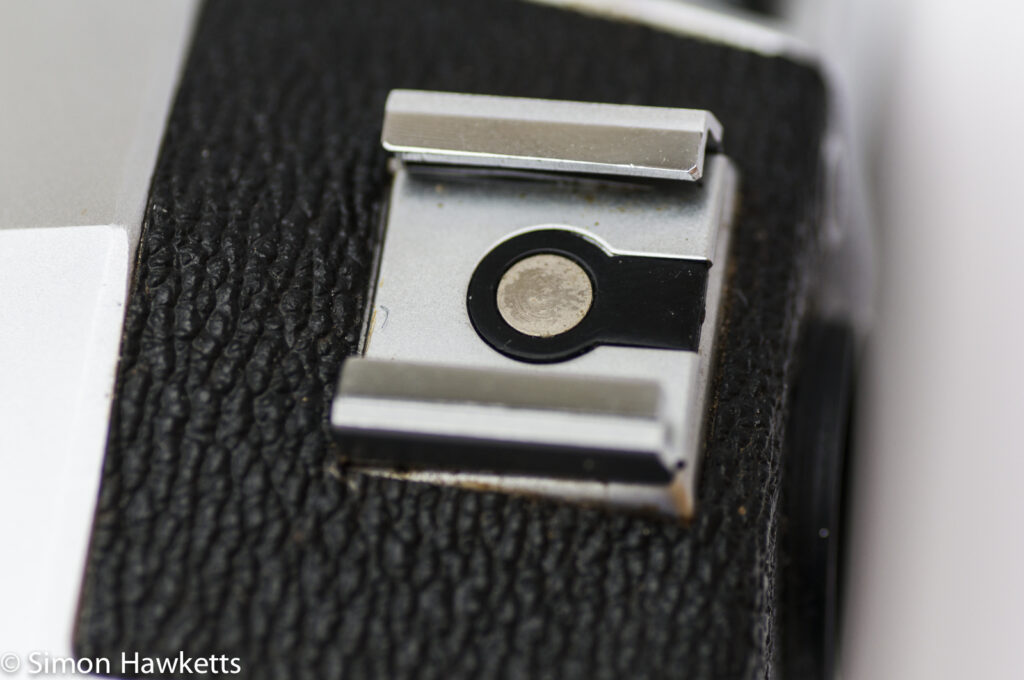
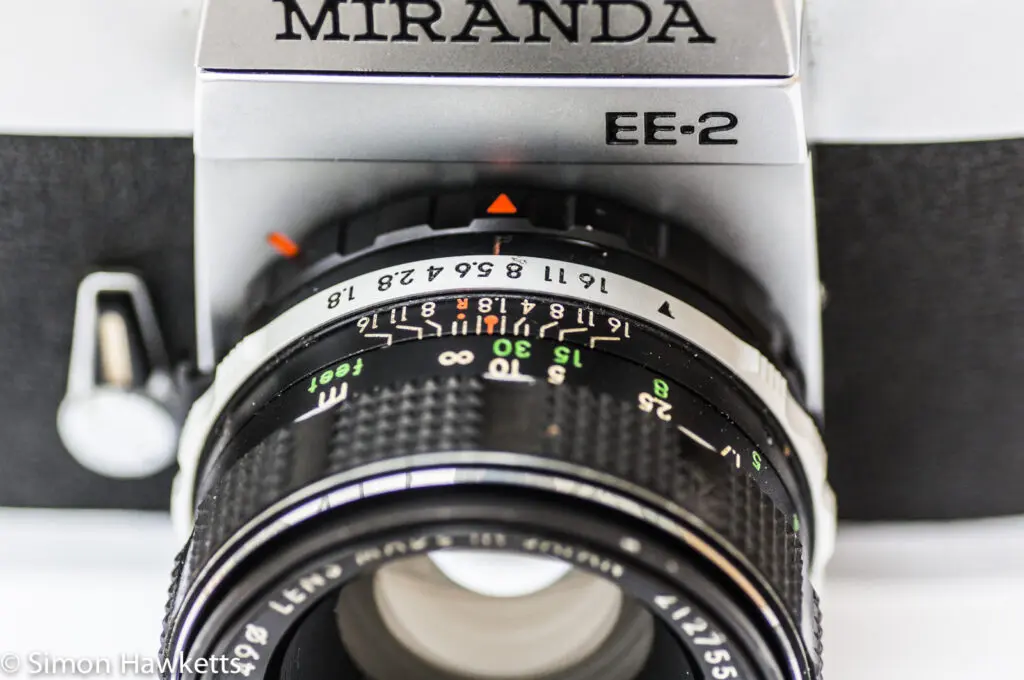
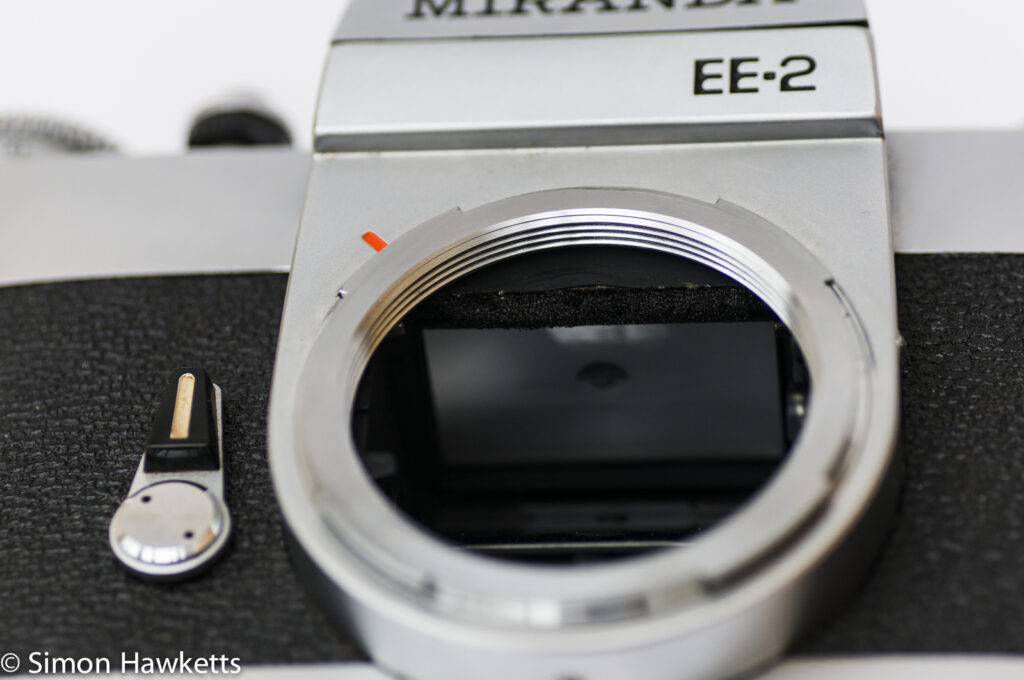
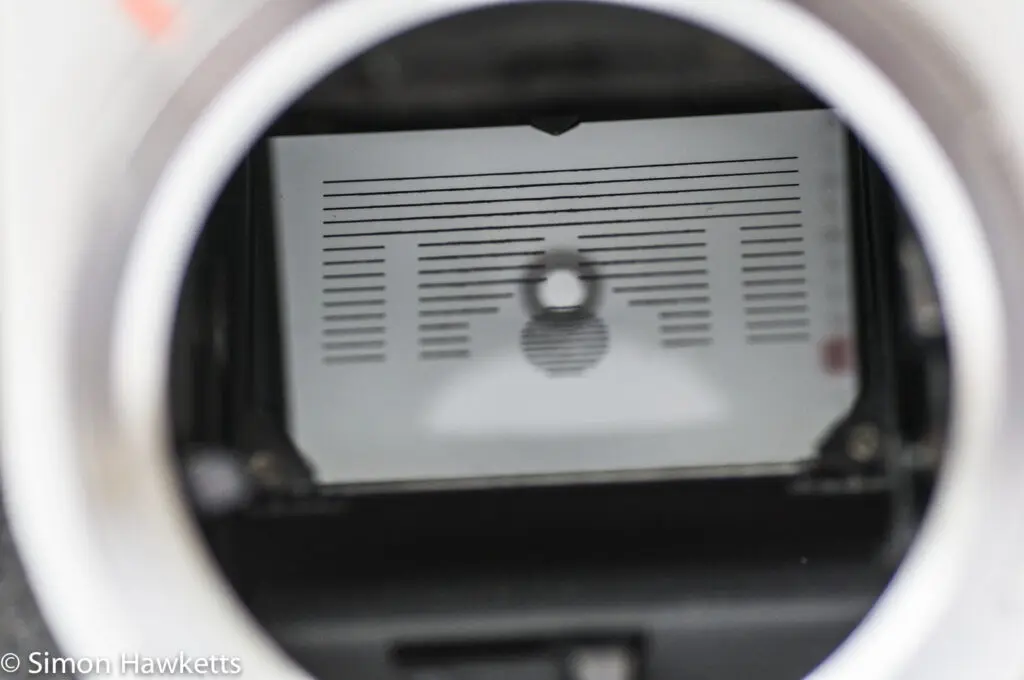
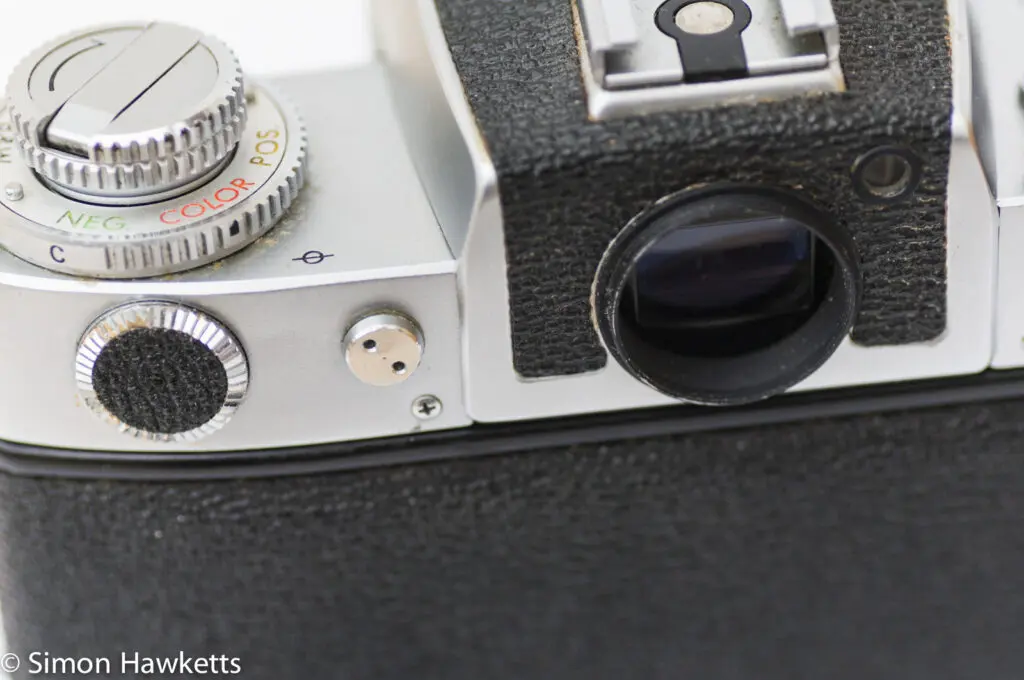
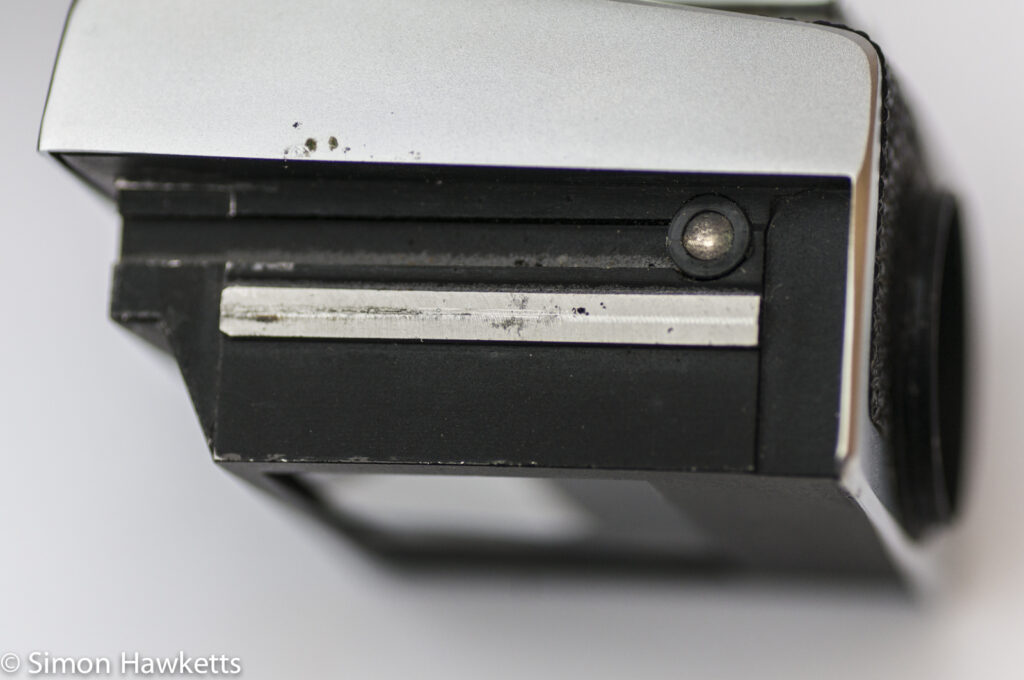
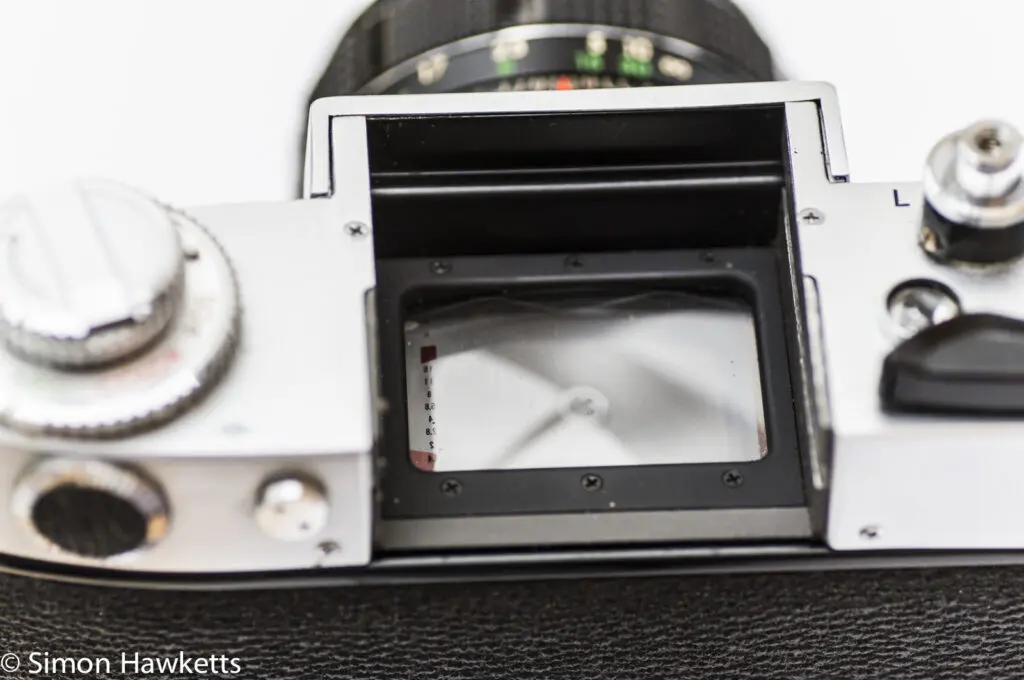
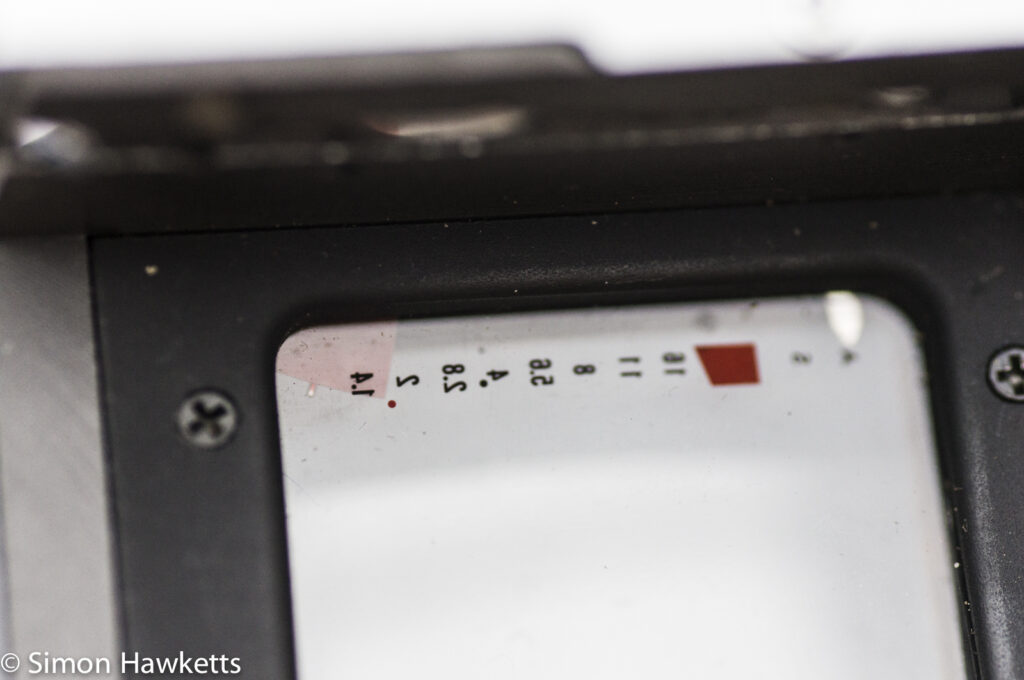
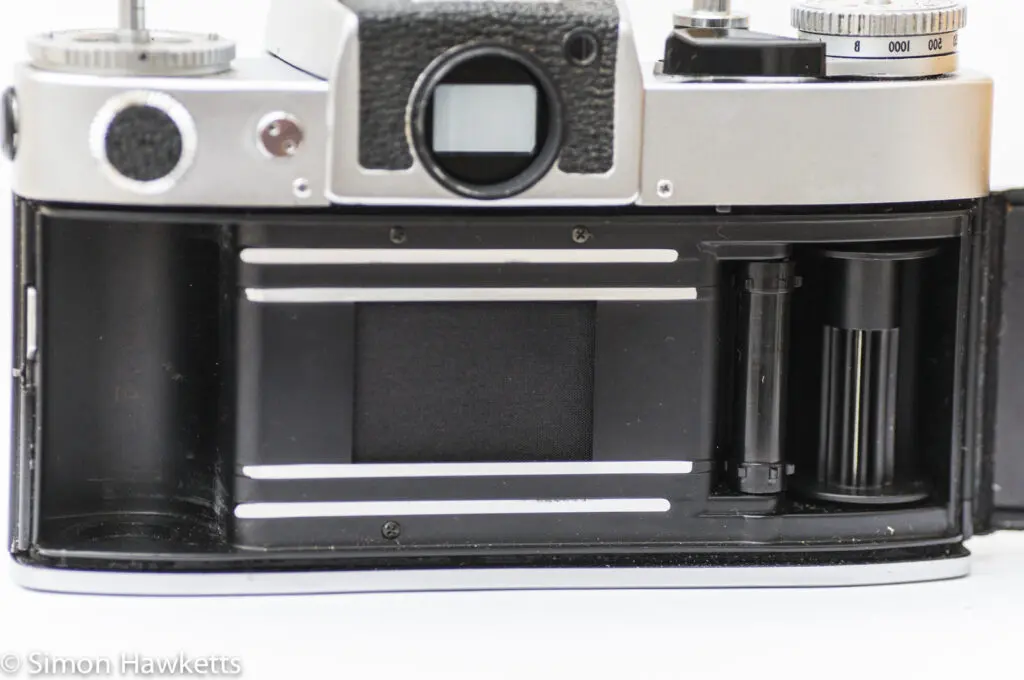
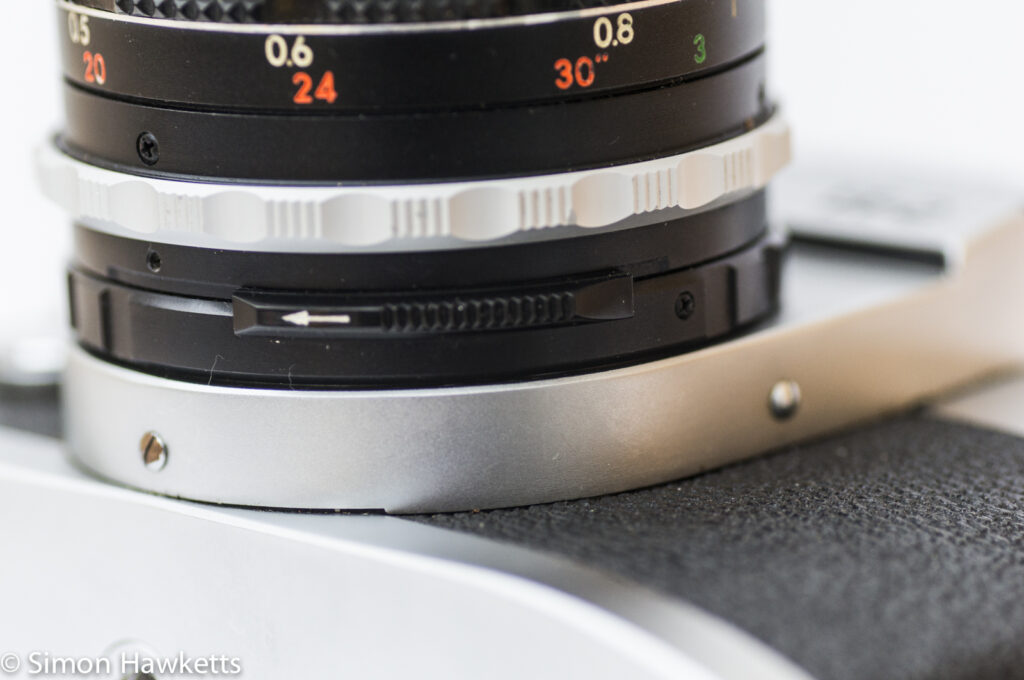

My Miranda Sensorex EE2
The general condition of my copy of this camera is good, but there are a few things I need to look at. First, the shutter speed indicator in the viewfinder doesn’t seem to work, as I said above. The exposure system also seems to be dead, even with a new battery fitted, although the battery is a modern 1.5v rather than the original 1.3v mercury cell. I doubt that the different voltage would stop the exposure system working at all, so it’s probably a wire off somewhere, dirty switch contacts, or the light cell open circuit.
The other slight issue is that the B setting on the shutter doesn’t work as B but as about 1/30, so I’ll need to also look at that.
Other than these issues, the camera seems to be pretty nice. The lens is certainly in good condition and doesn’t need the aperture cleaned like my Fv needed!
Miranda Sensorex EE2 Description
This camera was made towards the end of Miranda’s production of cameras and I believe is the last version of the Sensorex line.
It seems to be made with the same level of quality that the other Miranda’s in my collection have been and continues the feature set of those cameras, namely replaceable viewfinders with waist level and eye level finders available, stylist design and good engineering and adds a few additional features.
Exposure Metering
The EE2 Sensorex has an exposure meter built into the body of the camera and presents its results in the viewfinder as the photographer is taking the picture, much like a modern camera.
The component parts of the metering system are the light cell, the indication system and the battery.
In the EE2 the light cell is fitted within the mirror as can be seen in the picture here.
This is similar to the Sensomat version, although the EE2 has a larger cell spread over a larger proportion of the mirror. This is to allow this camera to offer two different modes of metering – spot measurement or averaged measurement. To select the required mode, a selection switch around the rewind crank is turned to either A or S, and a small indicator in the viewfinder also changes to show the mode in use.
Exposure mode.
Using the metering modes described above, the EE2 allows automatic exposure using what we would now think of as shutter speed priority. The photographer sets the aperture to the ‘EE’ mode by aligning the arrow on the lens to the arrow on the lens mount, and then sets the shutter speed required. The camera then automatically sets the lens aperture to get the correct exposure, or indicates under or over exposure in the viewfinder.
In order for this system to work, a new set of lenses were developed with the designation EC to indicate they would work in auto exposure mode with this camera. If older Miranda lenses are used, the camera works in ‘stopped down’ or manual mode.
In a similar way to the Sensomat, the shutter can only be set to a certain range of speeds for any particular film speed selected.
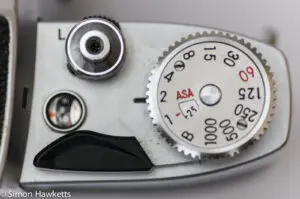
For example, with the film speed set to 1600 the lowest shutter speed is 1/60, but this camera has an override which lets you overcome that limitation if you want to. On top of the shutter speed dial is a small button which can be depressed, which allows values outside the normal range.
As well as the automatic mode, the camera can be used in fully manual mode, where the metering is just used to get an indication in the viewfinder as to the aperture the camera would select. It’s up to the photographer to use this setting or not as desired.
Another difference with this camera to the Sensomat and Fv models is the inclusion of a self timer mechanism, which would have been a standard fitting to almost every other camera by the time this was made, I would think. It’s the standard lever fitted to the front of the camera which is wound just before the exposure is made and adds a 10-second delay.
Viewfinder.
Although the viewfinder is replaceable it is of a different, non-compatible design, than that used on the Sensomat or the Miranda Fv camera I have. In the EE2 the viewing screen is set somewhat lower in the camera body and the viewfinder slot is therefore a bit deeper.
There are a couple of other differences, the first of which is a ‘hot shoe’ accessory socket fitted to the viewfinder. This has a small contact in the side runner which mates with a spring-loaded contact in the camera to pick up the signal when the viewfinder is slotted into place.
The other difference is just next to the eyepiece, where there is a small additional window, which is supposed to show the shutter speed selected. There is a corresponding small window in the side of the viewfinder which views the side of the shutter speed dial. Although this is supposed to show the shutter speed, on my camera it is completely dark, so it doesn’t seem to be working. Mind you, the viewfinder rattles when I take it off the camera, so there may be something broken. I’ll take it apart to investigate soon.
Miranda Sensorex EE2 Specifications
- Miranda Sensorex EE2 35mm film camera
- Manufactured around about 1976
- Replaceable viewfinder with eye level and waist level options available
- Shutter 1 – 1/1000 + B
- Top plate shutter release and lock
- Self timer
- Spot and Averaged metering
- In viewfinder exposure indication
- ASA 25 to 1600
- Shutter speed visible by viewfinder
- X and FP sync socket
- Hot shoe accessory socket
- Miranda bayonet and screw lens mount
- Depth of field preview
- 50mm f/1.8 EC bayonet mount lens
- In built lens hood on the 50mm lens
- Manual available on-line here
Discover more from Everything Vintage
Subscribe to get the latest posts sent to your email.

